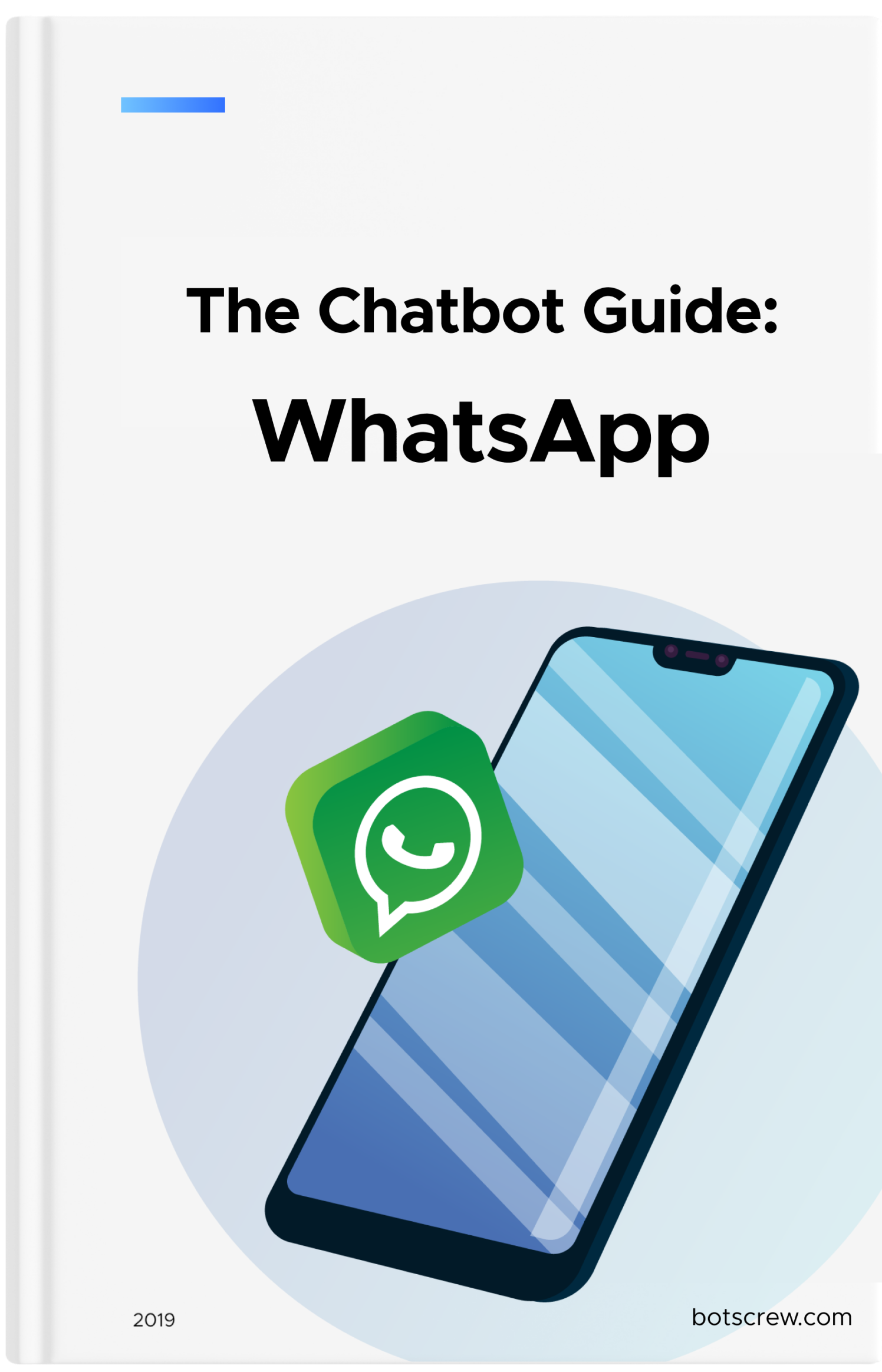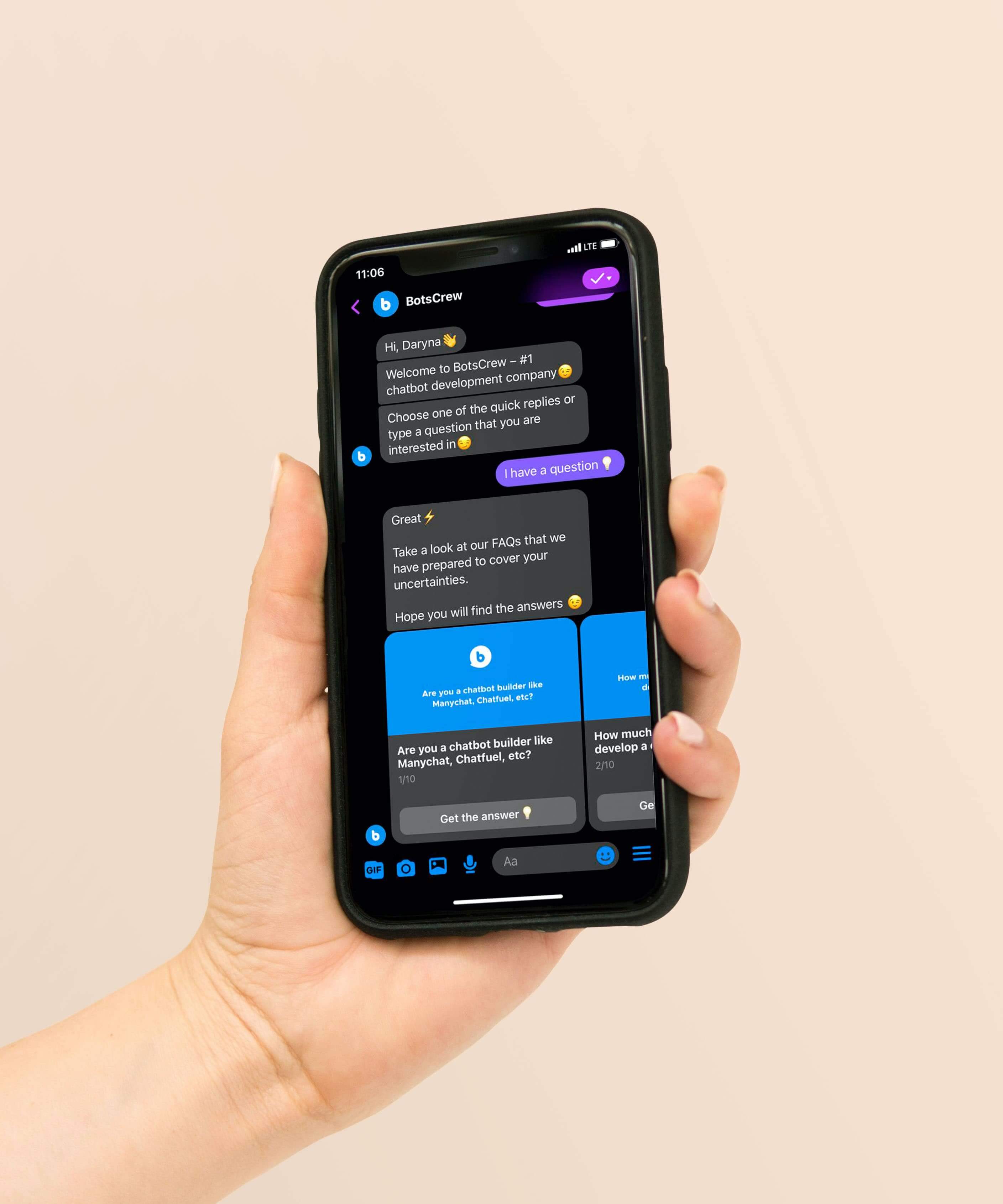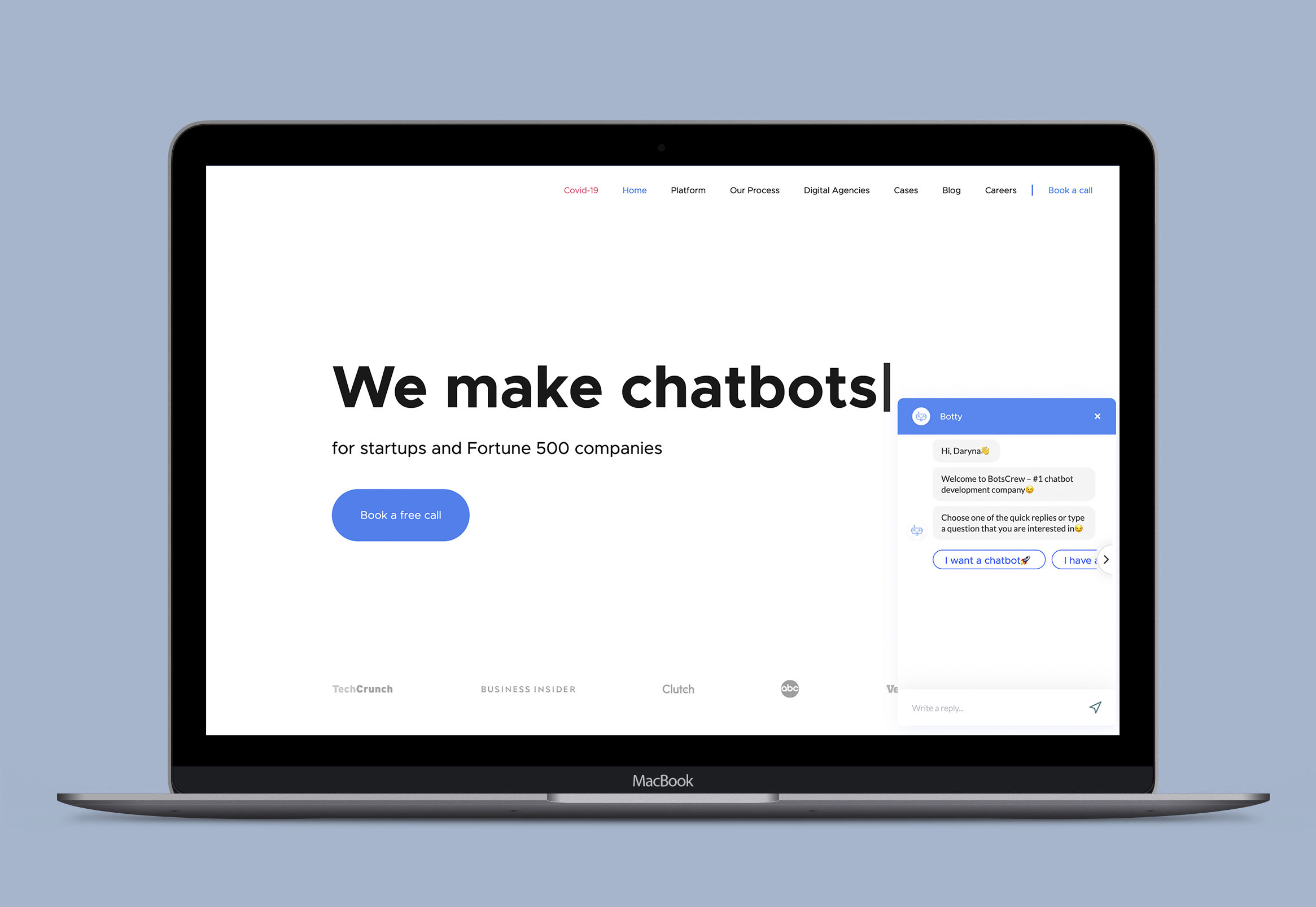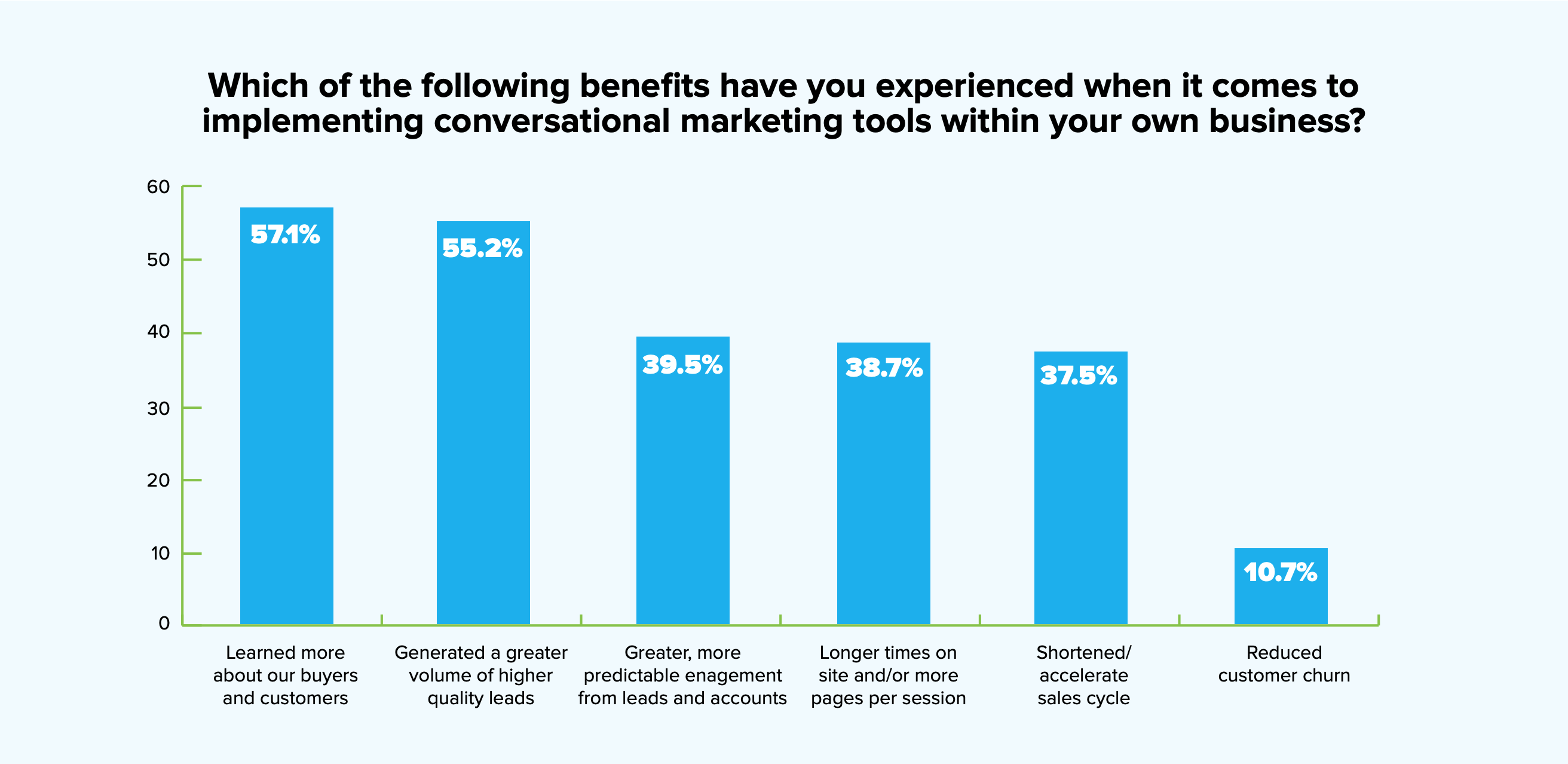Chatbots for Customer Service Help to Cut Costs
Customer service departments perform tons of routine tasks every day.
Isn't that a massive waste of time and money to spend all day on requests like: “How do I make an order?" “Where can I find the closest store?" “What are your working hours?" “What is your delivery time?".
While you pay a lot of money for your human agents to answer the same questions over and over again, chatbots can automate them in no time.
Chatbots for customer service are an excellent way for businesses to automate and boost the workflow and create better CX. Moreover, bots help to reduce support costs, waiting, and resolution times.
10 reasons why you should consider chatbots for customer service:
#1 Chatbots for customer service reduce support costs
Per year there are a reported 265 Billion Customer Requests. Businesses spent nearly $1.3 trillion to service these requests. Using Chatbots can help you save up to 30% of this. @chatbotsmag Click To Tweet
Let’s say you have a team of 15 customer support agents.
The average customer service rep salary in the US is around $35k per year. So, your customer service team salaries cost you near $525k/year (35000*15).
By implementing chatbots, you can save around 30% or more, which will give you $157k savings per year.
Chatbots for customer service cut the routine work that takes the support team’s valuable time.
Less mundane tasks mean your employees are happier, and they stay longer with the company. So, you’ll save time and money on hiring employees.
How to calculate the estimated ROI of customer service bot?
1. Analyze your customer service queries. Identify simple, repetitive questions that can be handled by a customer service bot. (this can be smth like: “How do I recover my password, Where can I get delivery details, Are your stores open on Sunday?”).
2. Calculate the percentage of chats that are made up of these simple queries.
For example, your support gets 10,000 queries monthly, and you identified that 80% or 8,000 questions are eligible for a chatbot to take over.
3. Calculate the agent time spent on those basic, repetitive requests.
After you identified that you have 8,000 tedious, repetitive queries, you can calculate how much agent time goes to these questions.
For example, on average, your agent answers the question in 4 minutes. So, 8,000 queries x 4mins = 32,000 minutes or 533 hours of your teams’ time goes to FAQ’s. Wasteful, huh?
If you say that customer service bot answers the questions twice as fast as agents, then you’ll have: 8,000 queries x 2mins = 16,000 minutes or 267 hours of bot’s time.
4. Estimate the annual costs of handling these requests by multiplying the hourly salary of the agent by hours spent monthly on these requests. Then, multiply the number by 12, and you’ll get the annual costs of answering FAQs by your agents.
Let’s say your agent earns 15$/hour. So, 15$ x 533 hours = 7 995$. And that’s how much costs to answer FAQs monthly. Now, let’s calculate the annual spendings: 7 995$ x 12= 95 940$ per year!
5. Now, compare the annual costs with quoted customer service bot cost. Don’t forget to count set up, integration, and any additional chatbot fees. You can learn more in our recent article: https://botscrew.com/blog/chatbot-development-process/
#2 Chatbots for customer service can answer from 30% – 80% of repetitive queries
Customer service executives can focus more on what they like to do and what they are best at. They will leave the mundane aspects of their job to the bots. @Nicochan33 Click To Tweet
How many times a day do your customer service agents answer FAQs?
Well, the studies say that around 80% of the time of the customer service reps goes to repetitive queries. Most of the working time, your customer service department is answering the same thing over and over again every day.
Don’t you think it’s a waste of your and customer service resources?
“These simple requests take up 70-80% of the typical rep's day, and if chatbots take over those quick fixes, customers would be happier avoiding a phone call, and customer service reps would have more time for proactive customer support.” Sophia Barron, Product Marketing at Owl Labs. Tweet this!
Chatbots for customer service are superheroes of answering clients’ FAQ. Bots automate simple queries while your customer service agents perform more complex tasks.
The idea here is to create a balanced customer service solution beneficial to you and your customers. Don’t create a fully automated system and leave your customers alone with the automation. Automate routine, simple and repetitive tasks, and leave to your agents more complex issues that require a human touch. To achieve this balance, incorporating AI customer service solutions can be instrumental. These solutions efficiently handle basic queries while ensuring that your human agents are available to address more nuanced and complex customer concerns.
By using a hybrid bot for Messenger from Servicefriend to provide meaningful and efficient customer service, the telecom company successfully increased employee productivity by 3.5X and reduced calls to its hotline by 50%. Tweet this!
#3 Chatbots for customer service provide multichannel support
Customers want to reach the company on a convenient platform.
While baby boomers might still contact support via phone and email, millennials expect brands to be available on social media. So, it’s no surprise that to provide great CX you need to meet clients' demand for multichannel support. And business has to adapt.
Brands should be available wherever their customers want them to be. It's not the brand's choice. The choice belongs to their customers. @mikewittenstein Click To Tweet
Keeping up to date with all communication channels can be challenging. Moreover, just being available on different channels isn’t enough. You have to keep your support consistent and fast from channel to channel.
Chatbots run on different platforms ensuring that you deliver consistent support to every client. Here you can learn more about which channels you should consider automating with customer service chatbots: https://botscrew.com/blog/chatbot-development-process/#Channels_Languages
Customers don't contact brands through a single channel, such as phone. They want multiple ways to get assistance and use whatever is the most convenient and easiest. For many customers, that means social media.@BlakeMichelleM Click To Tweet
#4 Chatbots for customer service provide 24/7 support
Today, if a brand wants to provide excellent CX, being available 24/7 is not an option.
It’s a must.
Customer service is not 9 a.m. to 5 p.m job. It’s around the clock duty. And these extra hours for your reps are extra dollars for your business.
But, there is another way around.
Customer service chatbots can answer clients’ questions when your customer service team is unavailable.
So, the customers get immediate responses, your business saves money by cutting down night and holiday shifts and your agents will be more satisfied due to a better working schedule.
Win-win for all three sides.
#5 Chatbots for customer service can speak many languages
Chatbots for customer service are an excellent decision if your clients are across the globe.
Instead of looking for customer service agents that speak many languages, you can train chatbots to learn those. Your customer service chatbot can understand and speak 100+ languages to assist your customers from different countries.
#6 Chatbots for customer service resolve tickets in a few seconds or minutes.
Modern customers are impatient, and they want instant replies and rapid solutions to their problems. Otherwise, they will go to your competitors if they require less effort to get in touch and provide faster support. That puts a lot of pressure on customer support representatives.
Chatbots for customer service provide immediate support. Bots don’t need time to think about the question to answer it, and they offer on-the-spot responses to customer requests.
What clients want is an easy, quick, and accurate answer. To the extent that chatbots can provide that, customers are open to them. @jimtincher Click To Tweet
#7 Chatbots for customer service help clients solve their problems on their own
Did you know that more than half of the clients who contact your support have already tried to find answers independently?
According to Microsoft, 75% of respondents have used a search engine to find answers to service-related questions before calling an agent, and 74% have used a self-service support portal.
The essence of modern customer service is this: customers crave self-service options for simple requests, but they want the ability to talk to a human when needed quickly. @BlakeMichelleM Click To Tweet
So, if a customer wants to find the information on his own, why not help him.
Bots can act as a knowledge base, provide information, answer basic questions, and give your customers the data they need to solve their issue. Using chatbots for customer service, you can create an interactive self-help portal for your clients, reducing the need to contact your support with simple questions.
However, you should provide an option to contact the human agent if the query is more complex or the client wants so.
By proactively educating your customers and pre-emptively answering their questions, you’ll reduce your support volume and improve your customers’ experiences.@kpetterman Click To Tweet
#8 Chatbots for customer service give you more context on each customer
Sometimes, a customer request is more complex and requires multi-department support. The customer might have to go from one of your customer representatives to others to solve her issue. So, there is no surprise that the context of previous or even current conversations can be lost.
There is nothing worse than making your customers repeat their issue multiple times to different customer service reps. And chatbots offer a solution here as well.
You can use customer service chatbots as the first contact point. The chatbot will communicate with your clients, collect the required information, gather it in reports, and even route the call to the right agent. This process can look like this:
1. The customer explains the problem to the chatbot.
2. Next, the bot asks questions and gathers the information.
3. The bot collects the info into notes or a small report,
4. And based on criteria, decides who is the best agent for this person to talk to.
5. The bot adds the contact to your CRM and assigns a specific tag to the client.
This way, the client won't have to repeat themselves to different representatives at your company. Your customer service department will also have info and the full history of your communication with this customer.
80% of customers say that companies do not have the context of their last conversation. @MarketWatch Click To Tweet
#9 When you don’t want to stop the conversation with customers
Chatbots for customer service are one of the most flexible communication channels.
When chatting with the chatbot, customers can stop and then resume the conversation from where they ended.
For example, suppose the client gets distracted from the conversation with your bot. In that case, they can come back later and continue the same conversation without starting over and explaining the same thing again.
Chatbots for customer service keep the conversation with the client open, so the customer service reps don’t need to keep in mind the chat history and remember at what point of the conversation the client dropped off.
#10 When you need to understand the emotion of the customer
Using speech recognition, chatbots for customer service can understand customers’ emotions and take action.
For example, if an angry customer contacts the support, the chatbot can recognize the emotion and connect the client to the support agent faster. The chatbot can give customer service reps “hints” of customers’ moods and emotions to help agents understand the context and give customers a more personal approach.
Summing up
There are many reasons to implement chatbots for customer service.
The main ones are that chatbots help cut support costs and improve CX by reducing waiting and response times. However, with all the benefits that chatbots for customer service can bring, it’s important to remember that customer support shouldn’t be fully automated.
The best way to mix chatbots and customer service is to find repetitive and simple areas for chatbots and leave proactive and complex support for human agents.
Here are a few tips from our thought leaders:
“Chatbots can't solve every problem, but they can resolve the most common issues, especially when paired with solid knowledge management. As chatbots grow in capabilities, their popularity will likewise increase, especially as customers get more accustomed to using them.” Jim Tincher, Founder, and CEO at Heart of the Customer. Tweet this!
“Companies with the best customer service strategies use a combination of self-service and human agent service—customers start by talking with a bot, but are then automatically transferred to a human if their issue is too complicated or involved. In the best-case scenario, the bot can even send information to the human so that the customer doesn’t have to repeat their situation. The essence of modern customer service is this: customers crave self-service options for simple requests, but they want the ability to talk to a human when needed quickly.” Blake Morgan, Customer Experience Futurist, Bestselling Author, Keynote Speaker. Tweet this!
“Be quick to build and test chatbots. They take time and can improve service options and lower costs. But, be slow when dismantling human-based systems. Taking a little extra time to make sure your chatbot design efforts add value to customers, not just reduce company costs, will be an excellent investment.” Mike Wittenstein Founder and Managing Partner at Storyminers. Tweet this!
“I think the modern customer wants both: self-service and human support. It all depends on the level of customer support clients need. In general, clients would prefer self-service options as long as they are well organized, and the customer journey is easy. However, for more complicated issues in some industries, customer service agents will be needed. Each industry has different needs; chatbots will need to adapt and not be closed in a silo.” Nicolas Babin, Key Opinion Leader, consultant & speaker. Tweet this!











